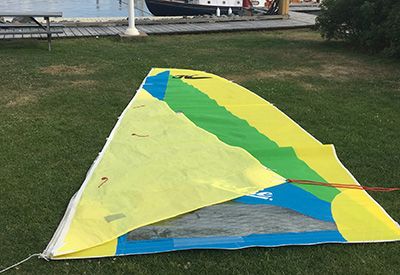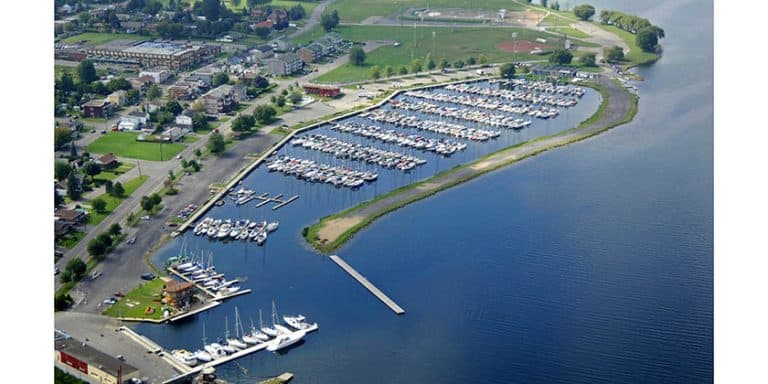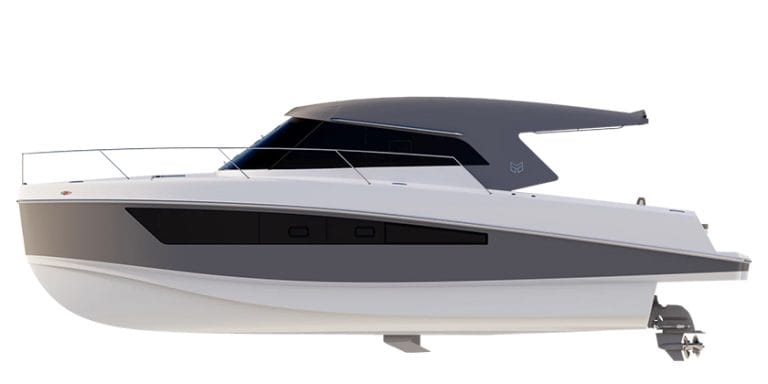Black Friday Sail

May 24, 2017
Proud new owner, Rob Dunbar
Our correspondent Rob Dunbar describes his newest acquisition:
I’ve recently made the jump from monohull to catamaran and the need for speed. Having limited experience as crew on both a Hobie 16 and Hobie 18 I knew that it was impossible for me to control a boat like that by myself. Though I didn’t know much about cats I did know that I wanted one that can be single-handed. At the time I knew so little I didn’t even know if such a vessel existed so I spent many hours on YouTube.
Eventually I chose a Hobie Wave primarily because of its ease of handling, tough construction of Rotomolded Polyethylene, and relatively light weight of 245lbs/111 kg.
Soon after making the purchase I took Thunderstruck out for a few trials on the large yet safe confines of historic Bedford Basin. I instantly fell in love and knew the right decision had been made. Though an experienced dinghy sailor, I looked at sailing a catamaran as re-learning to sail because everything happens so much faster and the dreaded pitch pole is ALWAYS on my mind.
After a few exhilarating outings, I took to YouTube again to further study from my Australian mentor known as Geoff Victor. Geoff, whom I’ve never met and only communicated with once, is in my opinion a guru Hobie Wave sailor. It was also at this point that I fell in to the trap of wanting to tweak the boat and play with the fine tuning to make the boat perform better and possibly faster.
 Geoff is a huge proponent of adding a jib to the Hobie Wave, which surprisingly does not come as standard equipment as the Wave is designed to be a cat-rigged catamaran. Many Hobie Wavers who purchased the optional jib kit made comments that caused me shy away from the “stock” jib. Geoff has an excellent video of tips and tricks Click here to increase the speed of the Hobie Wave as well as how to have a “superior” jib built by a local loft.
Geoff is a huge proponent of adding a jib to the Hobie Wave, which surprisingly does not come as standard equipment as the Wave is designed to be a cat-rigged catamaran. Many Hobie Wavers who purchased the optional jib kit made comments that caused me shy away from the “stock” jib. Geoff has an excellent video of tips and tricks Click here to increase the speed of the Hobie Wave as well as how to have a “superior” jib built by a local loft.
As with most construction projects for novices, a simple project often involves a domino effect of numerous little projects that must be completed until the original goal is achieved. For me to have a jib added to the sail inventory the purchase and installation a spreader bar to place between the two pontoons was required. Next came the purchase and installation of jib blocks. Because of the convoluted instructions, I would probably still be working on installing them if it wasn’t for the senior yard man, Travis, at the Bedford Basin Yacht Club (BBYC) and a few phone calls to the eBay shipper Boat Locker in Connecticut. Once those two items were installed I was able to go forward with having the custom jib, as per Geoff’s specifications, built by the North Sails loft in nearby Lunenburg, Nova Scotia. For the jib to become a reality I am eternally grateful to my “go-to” rigger of 9 years, Jamie Kernaghan at North Sails in Halifax for co-ordinating the project from start to finish and to Sandy MacMillan who supervised the work at the loft.
 Through a trial and error process and much patience on Sandy’s part “Black Friday” was born. Coincidentally I approached Jamie with the project during a Black Friday sale at the chandlery. Home to the storied sailmaker label R.B. Stevens& Sons Co. Ltd. that has made sails for the original Bluenose (1938) and Bluenose II (1986, 1991, and 2006)! The connection between R.B. Stevens & Sons Co. Ltd. (established 1910) and North Sails Atlantic Ltd. began in 1985. As a proud Nova Scotian, I am extremely pleased to be sharing the same label as the famed Bluenose.
Through a trial and error process and much patience on Sandy’s part “Black Friday” was born. Coincidentally I approached Jamie with the project during a Black Friday sale at the chandlery. Home to the storied sailmaker label R.B. Stevens& Sons Co. Ltd. that has made sails for the original Bluenose (1938) and Bluenose II (1986, 1991, and 2006)! The connection between R.B. Stevens & Sons Co. Ltd. (established 1910) and North Sails Atlantic Ltd. began in 1985. As a proud Nova Scotian, I am extremely pleased to be sharing the same label as the famed Bluenose.
All photo’s credited to Rob Dunbar





























